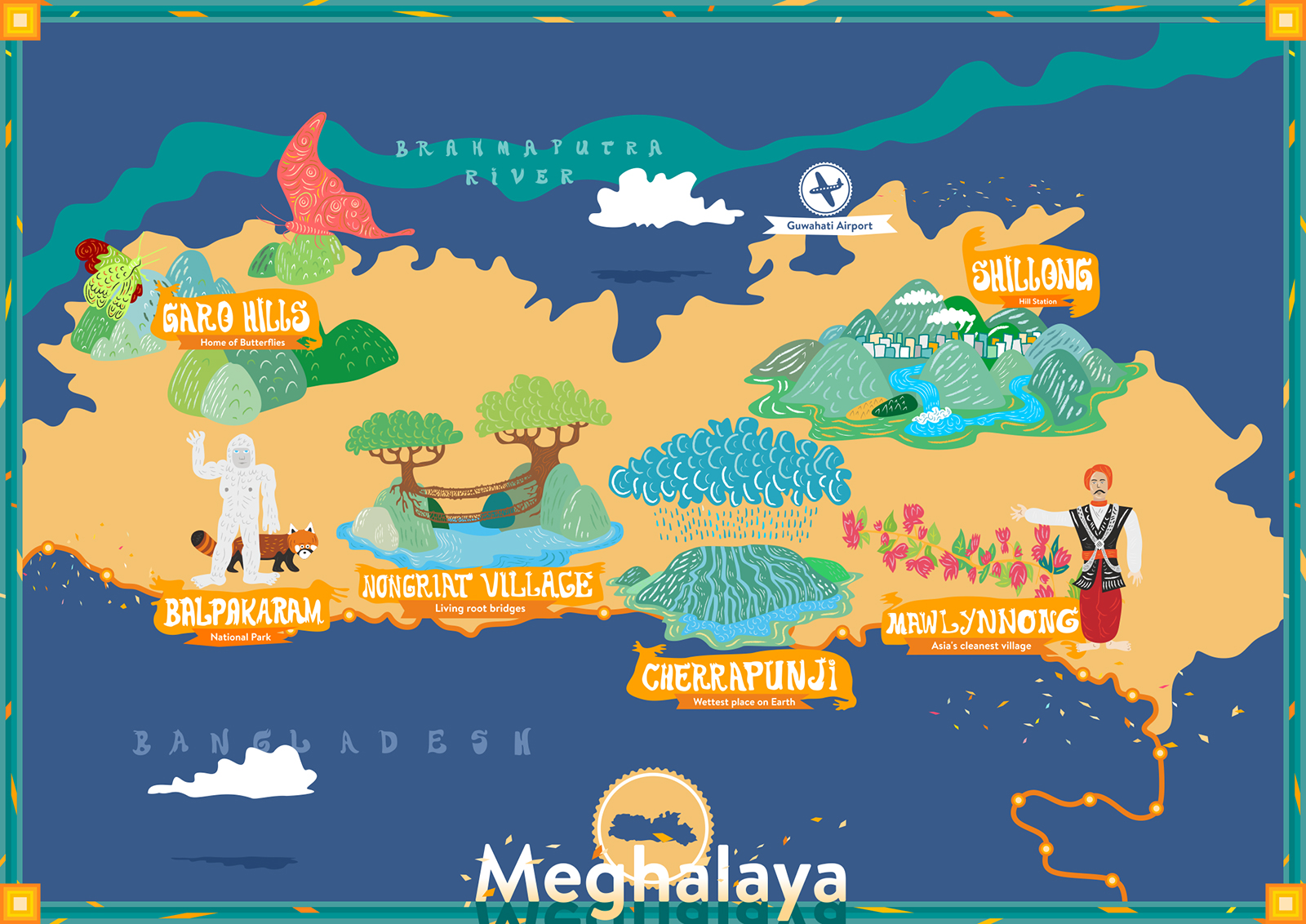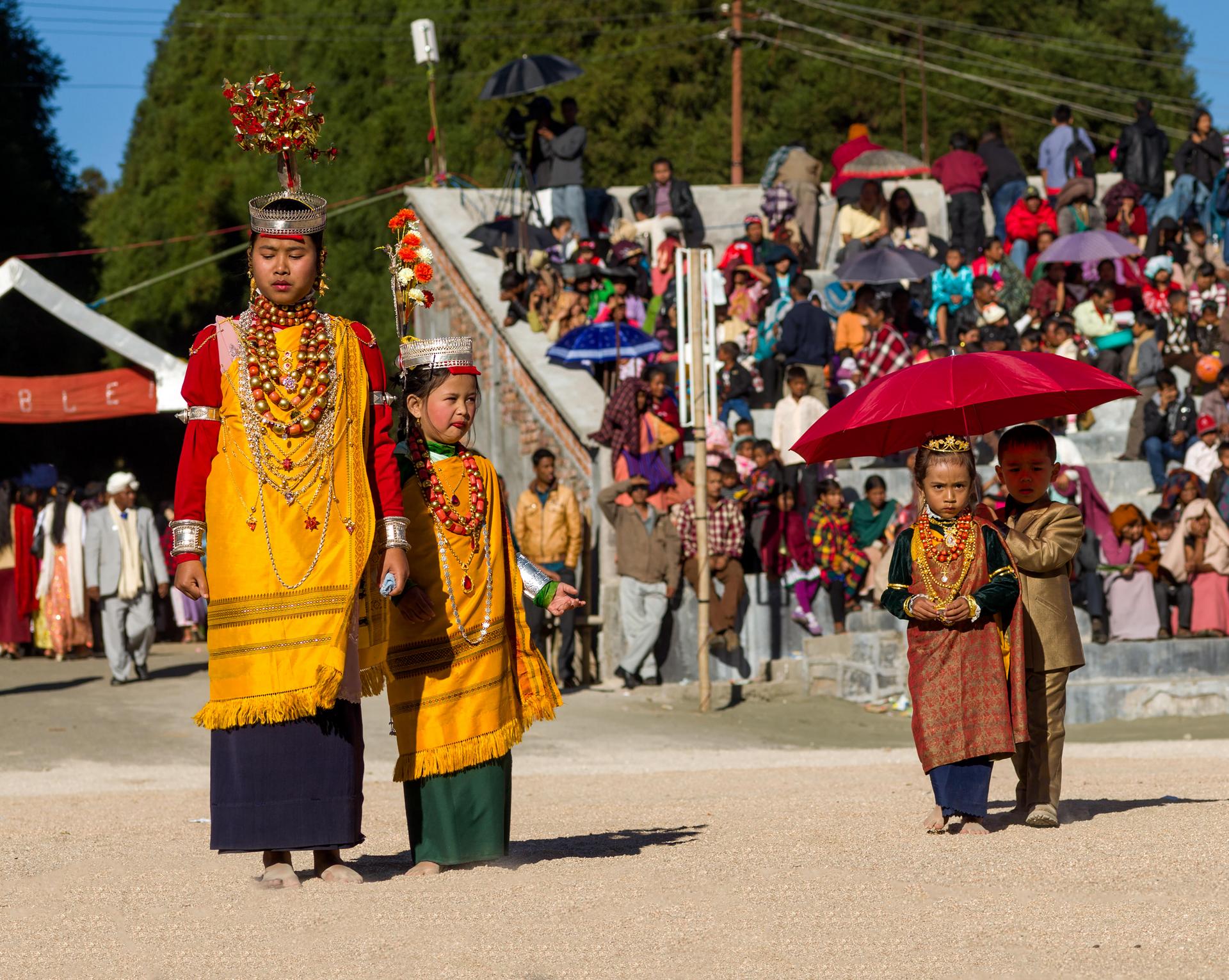Abode of Clouds
In the words of author Ruskin Bond "Meghalaya's landscapes are so stunning that they take your breath away and leave you in awe."


Meghalaya is home to three indigenous tribes, the Khasis, the Jaintias, and the Garos. The three tribes live in distinct parts of the state; the Jaintias occupy the Jaintia Hills of eastern Meghalaya, the Khasis occupy the Khasi Hills of central Meghalaya and the Garos reside in the western Garo Hills. The Khasis and Jaintias along with the Bhois and Wars are collectively known as the Hynniewtrep people. Belonging to the Proto Austroloid Monkhmer race, they are one of the earliest ethnic groups of settlers of the Indian sub-continent. The Garos who prefer to call themselves Achiks and their land Achikland, belong to the Bodo family of the Tibeto-Burman race and are believed to have migrated from Tibet.
The people of Meghalaya predominantly follow a matrilineal system where lineage and inheritance are passed down through the women of a family, where remarkably the youngest daughter inherits all the property and cares for aged parents and unmarried siblings. When there is no daughter in a family it is not unusual for the parents to choose another female such as a daughter-in-law as the heir to the house and all their possessions. It is worth mentioning that Meghalaya has one of the world's largest surviving matrilineal cultures.
As per tradition, the Khasis believe that their religion is given by God and is based on the belief in one supreme God who is the creator U Blei Nongthaw. A Khasi is a deeply religious person with an intense love for life. He believes that life is God's greatest gift and is accounted for in the hereafter. The Jaintias have the same religion but have also been influenced by Hinduism. The Garos too believe in one supreme creator Rabuga who is the sustainer and commander of the world. Other spirits act as his representative, and are appeased by sacrifices but never worshipped. The village headman remains the religious head of the community. Though many tribals have today converted to Christianity, the ways of the ancients still remain a part of their lifestyle and culture.
The Khasi and Jaintia tribes are particularly fond of songs that praise their land and nature; their landscape of hills, lakes, and waterfalls. The Garo songs are folk-related or dedicated to marriage, birth, festivals, and love. The state also has a liking for western music with many rock bands that perform over the country and host concerts of popular national and international artists.
Weaving is an ancient craft of the three tribes, used on both cloth and cane. Cane mats, stools, and baskets are famous artifacts. The Khasi cane mat called Tlieng can last for around 30 years. Musical instruments like the mouth organ, flute, and cup violin are also made from cane and bamboo, along with other indigenous products such as tobacco pipes and tribal weapons. The people of Meghalaya are majorly into agriculture, growing common crops such as rice, maize, potato, jute, mesta, cotton, areca nut, ginger, turmeric, betel leaf, and black pepper along with fruits such as orange, pineapple, lemon, guava, jackfruit, and bananas. Arts and crafts are also popular occupations that preserve their ancient knowledge. In recent years, horticulture has been promoted with an approach to sustainable organic farming resulting in making some of Meghalaya's flowers the best in the world. However, it is to be noted that rampant illegal and unscientific coal mining is prevalent in the state which is a growing threat to locals and the environment.
With over a decade of experience as a leading boutique tour operator in the region, travelling to Meghalaya with Greener Pastures has its merits. Expect hassle-free insightful journeys in the hands of passionate experts.
all itineraries